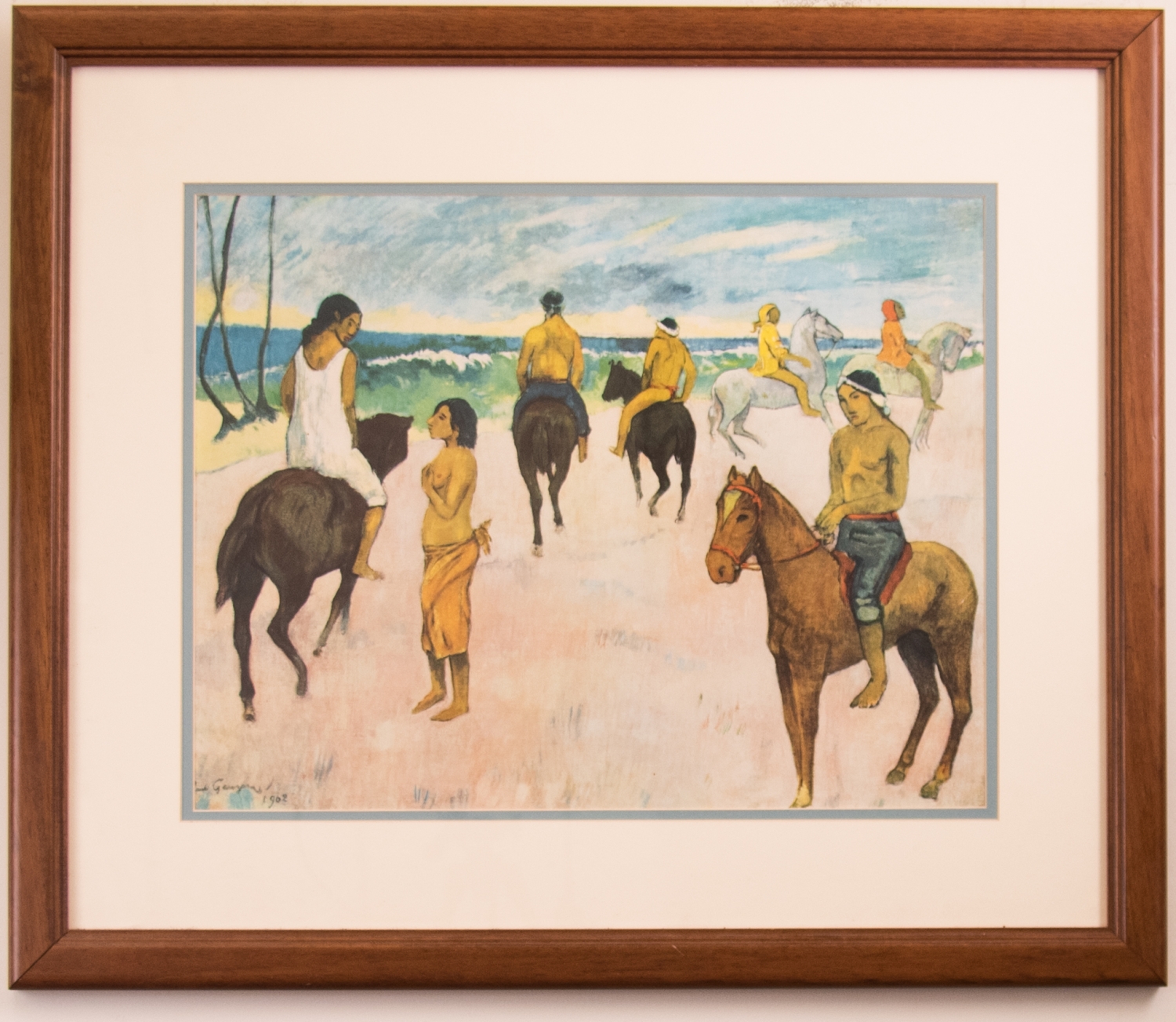Riders on the Beach II
Eugène Henri Paul Gauguin, better known simply as Paul Gauguin, is one of the premiere French post-Impressionist era artists. Gauguin's work held great influence on the French avant-garde and many modern artists, such as Pablo Picasso and Henri Matisse. Toward the end of his life, Gauguin spent ten years in French Polynesia. The majority of his paintings from this time capture the people and landscapes from the region. The original painting was created in 1902, the year before Gauguin's death. This scene shows a landscape likely from a beach on the Marquesas Island, Hiva-Oa, near Tahiti. The artist, seriously ill at the time, had migrated there in year 1901. In this scene two horseback riders, wearing hooded jackets, are exiting to the right, leaving the path of two semi-nude riders pointed towards the sea. Two additional figures, that are also astride horseback, are apparent in the left and right corner of the painting. The left equestrian is a female figure attired in a simple white dress peering down at another female figure wearing only a sarong. The horseman to the right, directs his gaze back at the viewer with a look of curiosity. The painting is noted for it's masterful coloring, that Gauguin synthesized against the pink hued beach which makes up the majority of the composition. The sea is a deep saturated royal blue. The sky is a combination of colors that streak through the sky, with blue, yellow and green predominating.

